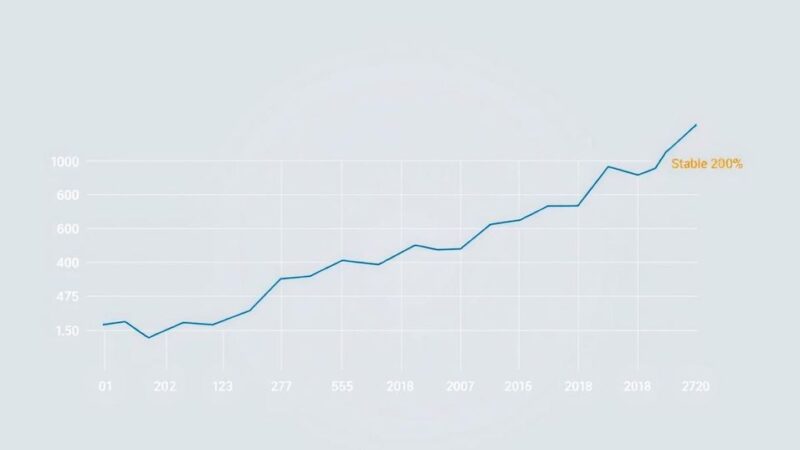The Comoros economy is slowly recovering, projected to grow by 3.4% in 2024, but struggles with persistent poverty and macroeconomic risks. The blue economy, focusing on fisheries and marine tourism, offers substantial opportunities for sustainable growth, but requires reforms in fiscal policy, governance, and private sector development. The first Comoros Economic Update report explores these issues and advocates for aligned strategies towards long-lasting growth.
Comoros is on a gradual path to recovery, with economic growth projected to reach 3.4% in 2024. However, this growth is still not enough to significantly alleviate ongoing poverty and inequality issues across the nation. The medium-term outlook does seem somewhat optimistic, although serious macroeconomic risks remain, such as a high reliance on imports, limited export diversification, and a heightened vulnerability to climate changes and global economic fluctuations.
To achieve sustainable growth, the country needs to enhance fiscal stability, bolstered private sector competitiveness, and improve governance. Significant opportunity lies within the blue economy. By expanding marine tourism, fisheries, and conservation initiatives, along with vital infrastructure and environmental protections, Comoros can unlock its true potential.
The inaugural Comoros Economic Update report highlights the current economic situation and medium-term forecasts, emphasizing the transformative capabilities of the blue economy in promoting growth, generating jobs, and safeguarding ecosystems, while ensuring resources remain sustainable in the long run.
While there’s an observable rise, the economy still struggles against persistent poverty and inequality issues. In 2024, economic growth edged up from 3% to 3.4%, primarily driven by household spending and service sector expansions, spurred on by increasing remittances and dropping inflation. Yet, agriculture and industry did see some growth, per capita income stagnated and poverty still looms large. Public spending surged due to externally financed projects, causing the fiscal deficit to balloon from 1.3% to 3.9%, marking public debt at 36.8% of GDP, which led the IMF and World Bank to flag Comoros as high risk for debt distress.
Remittances are valuable, averaging 11.3% of GDP for the past decade, yet they can’t balance out the trade deficits or finance overall development. Alongside these challenges, the banking sector is also in a weak position, with excessive non-performing loans leading to limited access to credit and hampering private sector growth. There’s a pressing need for inclusive reforms to strengthen public finances, diversify the economy, and aid in building resilience for long-lasting, sustainable growth.
Despite a better growth forecast between 2025 and 2027, which is expected to be driven by private consumption and government investments, particularly for infrastructure and preparations for the Indian Ocean Island Games, the country still faces looming macroeconomic and developmental challenges. While inflation is predicted to decrease, reforms such as liberalizing rice imports will play a crucial part. High import dependency continues to burden the stability of Comoros, along with a lack of export diversity and inflationary pressures. The country’s upcoming WTO accession might open doors to new markets but could also hurt trade revenue if not accompanied by additional policies. Climate threats, natural calamities, and global economic volatility exacerbate the situation, with poor governance and high youth unemployment hampering responsiveness to these challenges.
For Comoros to ensure ongoing growth, it’s essential to reform fiscal policies, foster private sector growth, and enhance governance to bolster resilience. With public debt expected to rise to 37% of GDP in 2024 and domestic revenue rates being among the lowest globally, the scope for fiscal maneuvering is tight. Reforms need to broaden the tax base, streamline tax administration, and enhance public financial management. Transparent debt management combined with concessional financing will help in alleviating distress. Creating an environment where the private sector can flourish requires addressing regulatory barriers, enhancing financial accessibility, and leveraging remittances wisely.
Accession to the WTO could enhance export diversity, especially in crucial sectors like fisheries and agriculture but requires investments in logistics and quality infrastructure. Additionally, revamping the financial sector to mitigate non-performing loans and drive financial inclusion is vital. Strong governance measures, better oversight for state-owned enterprises, and improved anti-corruption frameworks must be part of the plan to improve service delivery and foster confidence among potential investors.
The untapped potential within Comoros’ blue economy, particularly in fisheries and marine tourism, could be a game-changer if managed well. Still, challenges exist in converting rich fisheries resources into effective economic growth due to outdated infrastructures and limited market access. A strategically designed blue economy plan, focused on governance reforms, sustainable investment, and ecological protection, promises to potentially boost GDP growth while steering Comoros towards achieving upper-middle-income status by 2050. This approach coincides with the objectives set forth in the Plan Emergent Comores 2030, which emphasizes sustainable resource management and climate adaptability. Key areas of focus will include modernizing fisheries, boosting aquaculture, establishing better port and energy infrastructures, and promoting financial inclusivity, particularly for women and micro, small, and medium enterprises. To ensure a successful alignment of human capital development, climate adaptability, and financial inclusivity along with blue economy priorities is key for long-term sustainable growth in Comoros.
In summary, while Comoros is showing signs of economic recovery with growth projected at 3.4%, the country must tackle its challenges surrounding poverty, governance, and macroeconomic risks. The blue economy presents a significant opportunity for sustainable growth through marine tourism and fishing, but dedicated reforms and investments in governance, infrastructure, and inclusion are essential to realizing this potential. Overall, aligning short-term initiatives with long-term sustainability goals will be crucial for Comoros’ economic advancement.
Original Source: www.worldbank.org






